Gruppo T
The Group T was one of the most important kinetic and programmed art groups in Italy. Introduced an innovative art form through the creation of perceptual experiments and interactive environments aimed at soliciting and recreating different and unexpected reactions in the spectator.
It consists of five components: Giovanni Anceschi, Davide Boriani, Gianni Colombo, Gabriele De Vecchi, Grazia Varisco, the Group T (so called referring to the concept of time, as a new variable of becoming in a space-time dimension that fully involves the user), while relying on a collectivist idea of the artistic work that led to the proposition of works with the signature "Gruppo T", never completely dissociated production from individual personalities as it did elsewhere for other groups who chose to sign their works only and exclusively behind a sign. For more than a decade the works and actions of Group T have raised the problem of the habitability of the work (environment-work) and its interaction with the spectator, becoming the pioneers of operating modes then gained in the next decade. In anticipation of the times and too radically rebellious, for ideological and cultural choices, to follow market strategies the reality of the group has remained partially submerged for a few decades.
Group T can undoubtedly be considered among the forerunners of kinetic art, which actually came into being in 1961, following the experimentation of moving objects conducted by Calder Alexander and Munari Bruno, who proposed experiments of perceptual nature through the idea of artifacts, who acquire their own characteristics through the external intervention of the performer, similarly proposed by Vasarely Victor and the Group N. The group is proposed in a highly significant period for international art, presenting at the same time the emergence of groups with similar artistic intentions, such as the Zero Group in Dusseldorf, Group N, Grav or Groupe de Recherche of Art Visual and Equipe 75, with whom it shares the appearance of breaking into traditional art forms and the pursuit of a new art form innovative and radical. Group T was particularly critical and severe towards the concept of objective expression, which connotes and sums up the conservative attitude of traditional art, which rejects through an investigation of the perceptual variability of the object in the user. The group's intent, expressed through extensive experimentation, is to clear the art by proposing a new relationship between work and observer, transcending the limits and directives imposed by traditional techniques, to guide, direct and fully involve the user of the works towards a multisensory subjective experience.
2009
“Spazio, tempo, Immagine”, CIAC – Centro italiano arte contemporanea, Foligno, Perugia
“Balla – Gruppo T- Grimaldi”, Castello di Rivoli, museo d’ arte contemporanea, Turin
2008
In the framework of the “Arte di sera”, the Filiberto Menna Foundation proposes the video catalog “Gli ambienti del gruppo T”
2005
“Ambienti del Gruppo T, le origini dell’ arte interattiva”, Galleria nazionale di arte moderna, Rome
2004
“Zero. 1958 – 1968. Tra Germania e Italia”, Centro Arte contemporanea Palazzo delle Papesse, Siena
2003
“Grande oggetto pneumatico”, Faculty of Design and Arts, Convento delle Terese, Venice
2002
Stadtische Museum Gelsenkirchen
Stadtgalerie Kiel
Staatlisches Museum Schwerin
Alpen – Adria – Galerie, Klegenfurt
2001
“Kinetiche Kunst aus Italien, 1958/1968” Wanderausstellung, Ulmer Museum
Stadtische kunsthalle Mannheim
2000
“Arte programmata e cinetica in Italia”, Galleria d’arte Niccoli, Parma
1996
“Arte programmata del 1962”, Galleria Fumagalli, Bergamo
Ricostruzione della mostra “Arte programmata”, Olivetti, Milan
1995
“Due secoli di scultura a Brera”, Museo Permanente, Milan
1993
“Trent’anni dopo. L’avanguardia gestaltica degli anni ‘60”, Showroom Baleri Italia, Milan
“Mostra storica in ricordo di Gianni Colombo”, together with “Milano ‘93”, posthumous edition “Opus Incertum” di Gianni Colombo
1984
“Arte programmata e cinetica 1953/ 1963: l’ultima avanguardia”
1976
“Ambiente come sociale”, XXXVII Biennale di Venezia
“Progetto di uno spazio verde attrezzato”, Piazzetta Sesto San Giovanni
1975
“Cartella di serigrafica di 14 artisti programmati”, Nikol art, Ed. Nikol, Padua
“Iponterpunzione”, Anceschi
“Immagine invisibile”, Boriani
“Trama incoerente”, Colombo
“Schema cRometico programmato”, Devecchi
“Left. Ricerche a Milan agli inizi degli anni ‘60”, studio Luca Palazzoli, Milan
1974
“Ambiente crono statico”, Boriani – Devecchi, Raccolte Civiche Cagliari
“Il design e le materie plastiche”, centro Montedioson, Milan
1973
XXVIII Biennale di Milan, Boriani – Devecchi e gruppo VDN,
Palazzo della Permanente, Milan
1971
“Peinture en plein air”, Galleria Cenobio – Visualità, Milan
1970
“Ricerca e progetto, proposte per un’esposizione sperimentale” , Boriani – Castiglioni, XXXV Biennale di Venice
“Spazio della stimolazione percettiva”
“Eurodomus 3”, Milan
“Amore mio”, Palazzo Ricci, Montepulciano
“Vitalità del negativo”, Palazzo delle Esposizioni, Rome
1969
“Tendencije 4 “, Muzei Umjetnosti, Zagreb
“30 artisti nel paesaggio italiano”, promossa dalla XIV Triennale di Milan
“Nuovi materiali , nuove tecniche”, Caorle, Colombo
“Campo Urbano”, Como, Boriani – Colombo – Devecchi
“Strutturazione temporale in uno spazio urbano. Temporale artificiale della durata di 15 minuti”, Piazza Duomo
“Plastic research”, New Goodman Gallery
Partecipazione allo spettacolo “Off Off”, al teatro Manzoni di Milan : “Grande Oggetto Pneumatico” , Boriani – Colombo – Devecchi
1968
“Cinètisme – Spectacle – Environnement”, Theatre Mobile, Maison de la Culture, Grenoble
“Percorso cinetico ad ostacoli programmati 1968”, con Enzo Mari
1967
“La luce”, galleria dell’ Obelisco, Rome
“Lo spazio dell’immagine”, Palazzo Trinci, Foligno : “Ambiente stroboscopico 2”, Boriani
“Ambiente stroboscopio 3”, V Paris Biennal, Musèe de l’Art Moderne
“Salone internazionale dei giovani”, Milan, Colombo – Devecchi – Varisco
1966
“KunstLichtKunst”, VanAbbemuseum Eindhoven
1965
“Nuove Tendencije 3”, Muzei Umjetnosti, Zagreb
Mostra collettiva, galleria Il Punto, Turin
1964
Nouvelle Tendance, Musée des Art Décoratifs, Louvre, Paris
XIII Triennale di Milan
Art in motion, arte programmata, Royal College of Art, Londra
XXXII Biennale di Venice
“Strutture di Visione”, Avezzano
XIII Verucchio's artists and critics conference on the theme “Tecnica e ideologia”
Miriorama 14, Studio F, Ulm
1963
“Oltre la pittura, oltre la scultura”, international review of visual, kinetic and programmatic research, Cadario, Milan – La Bussola, Turin
“Nove Tendencije 2”, Galerija Suvremene Umjetnosti, Zagreb
“Oltre l’informale”, IV Biennale di San Marino
XII Convegno critici a artisti, Verucchio
“Arte e libertà”, joint statement of Group T with Group N and Enzo Mari
Miriorama Natale
Miriorama 13, Oggetti d’uso comune e altri oggetti da guardare”
1962
Miriorama 11, Studio N, Padua
“Antipeinture G.58”, Hessenhuis, Anversa
Miriorama 12, Galleria del Cavallino, Venice
“Arte programmata, arte cinetica, opere moltiplicate, opera aperta”, Negozio Olivetti, Galleria Vittorio Emanuele, Milan. La mostra circolerà in Italia, Germania e Inghilterra. Successivamente in dieci musei degli U.S.A.
The show will circulate in Italy, Germany and England. Subsequently in ten museums of the U.S. Gruppo T - “Fontana” for th Libreria del Cavallino, realized on the occasion of the 31st Venice Biennale
10 semicircles in brass slab, pivoted on two vertical pins, rotate intersecting, moved by the water falling from an overhang.
“Parata luci”, Milan
1961
Miriorama 9, Minami Gallery, Tokyo
Miriorama 10, galleria La Salita, Rome
“Bewogen – Beweging”, Stedelijk Museum, Amsterdam
“Ro’ relse i konste”, Moderna Museet, Stockholm
XII Premio Lissone
Gruppo T “Grafiche Programmate con criteri cibernetici” for the Almanacco Letterario Bompiani 1962, dedicato devoted to the civilization of electronic computers, curated by Umberto Eco and Bruno Munari
1960
Miriorama 1, galleria Pater, Milan
Miriorama 2, galleria Pater,Milan
Miriorama 3, galleria Pater,Milan
Miriorama 4, galleria Pater,Milan
Miriorama 5, galleria Pater, Milan
Miriorama 6, galleria Pater,Milan
Miriorama 7, galleria San Matteo, Genova
Miriorama 8,“Multipli del gruppo T” gall. Danese, Milan,
Premio San Fedele, is the first exhibition outside the Miriorama cycle
Showroom di design, Bruno Danese, Milan

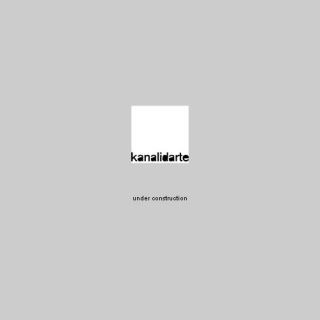
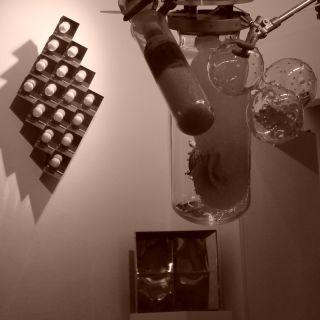 L'invadenza della tecnologia, l'impossibilità di evitarla - Getulio Alviani?, Joel Stein vs Enrico T. De Paris
L'invadenza della tecnologia, l'impossibilità di evitarla - Getulio Alviani?, Joel Stein vs Enrico T. De Paris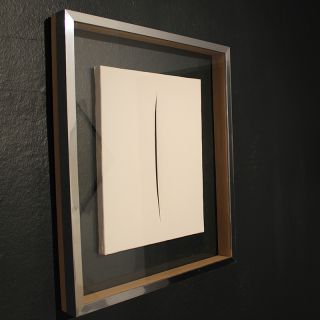 ITALIAN ZERO/CROSS REFERENCE
ITALIAN ZERO/CROSS REFERENCE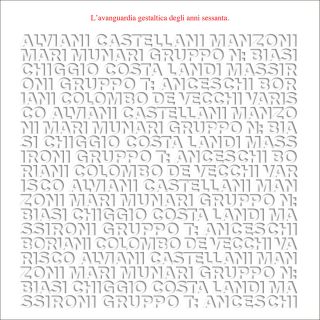 L'AVANGUARDIA GESTALTICA DEGLI ANNI SESSANTA _ CINQUANT’ANNI DOPO
L'AVANGUARDIA GESTALTICA DEGLI ANNI SESSANTA _ CINQUANT’ANNI DOPO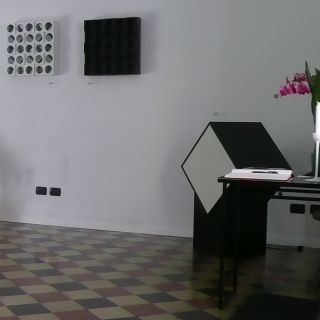 Leggere dagli anni sessanta: Milano
Leggere dagli anni sessanta: Milano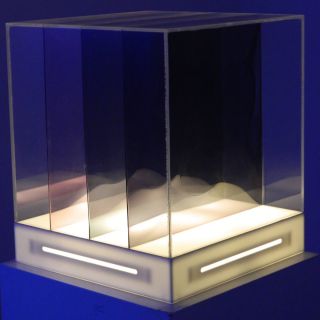 Licht und bewegung
Licht und bewegung